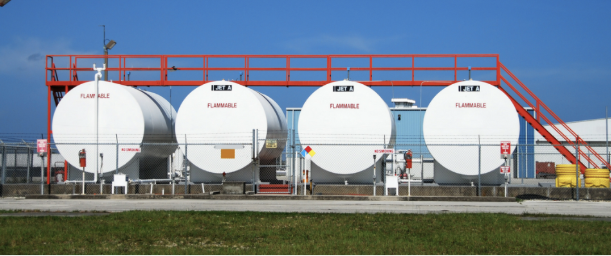Why Tank Location Matters
When it comes to storing fuel, water, or other essential liquids, the choice between underground and above-ground systems makes a significant difference. While buried tanks keep things hidden, they also create inspection challenges and potential environmental risks. In contrast, above ground storage tanks offer a balance of reliability, visibility, and ease of maintenance that appeals to both homeowners and businesses.
A Clear View of Tank Health
The greatest advantage of above-ground systems is visibility. Problems like rust, dents, or leaks are much easier to spot when the tank is in plain sight. This allows owners to address small issues before they grow into costly repairs or replacements.
With underground tanks, damage often remains hidden until major contamination or system failure occurs. Above-ground placement provides peace of mind through transparency.
Easier Maintenance and Repairs
Routine care is simpler and less expensive when the tank is accessible. Technicians can quickly inspect, clean, or repair areas without the need for excavation. This reduces labor costs, shortens repair times, and minimizes disruption for both homes and businesses.
Whether it’s replacing valves, adding protective coatings, or reinforcing seams, above-ground systems make upkeep far more efficient.
Safety Advantages
Safety is another strong reason to choose above-ground options. In the event of a leak, spills are easier to detect and contain. This not only protects the property but also prevents contaminants from seeping into soil and groundwater.
For businesses handling hazardous materials, the ability to monitor tanks closely is a critical safeguard against accidents and regulatory penalties.
Cost Savings Over Time
While installation of above-ground systems may require space planning, the long-term savings often outweigh the investment. Reduced excavation costs, simplified repairs, and fewer emergency interventions all translate into lower lifetime expenses.
Owners also save by avoiding the environmental remediation often required with underground leaks, which can run into tens of thousands of dollars.
Flexibility for Homes and Facilities
Above-ground storage systems can be tailored to fit a wide variety of needs. Homeowners often use them for heating oil or water reserves, while businesses rely on them for fuel, chemicals, or backup systems.
Because the tanks are visible and accessible, it’s easier to adjust capacity, relocate them if necessary, or add protective measures such as containment berms.
Compliance and Regulation Benefits
Environmental agencies often enforce stricter rules for underground tanks due to the difficulty of monitoring them. Above-ground units simplify compliance because inspections can be performed quickly and thoroughly.
This visibility helps owners stay ahead of regulations, avoiding fines and demonstrating commitment to safe practices.
Environmental Responsibility
Choosing an above-ground option is also a proactive move for environmental protection. Since leaks are easier to identify and manage, the risk of long-term soil or water contamination decreases significantly. For communities concerned about sustainability, this choice reflects a commitment to safer resource management.
Case Example: Switching to Above-Ground
A business operating with aging underground tanks faced increasing maintenance costs and compliance concerns. They transitioned to above-ground storage tanks instead. The new system allowed quick inspections, reduced downtime for repairs, and provided long-term cost savings. More importantly, it reassured local regulators and the surrounding community that safety was a top priority.
Looking Forward: The Smart Choice for Longevity
As more property owners weigh their options, above-ground storage is becoming a preferred solution. It combines transparency, cost-effectiveness, and adaptability, making it an investment that supports both immediate needs and future peace of mind.
For anyone evaluating tank systems today, above-ground storage offers not just a practical choice but a strategic one—balancing safety, savings, and sustainability in one reliable package.

